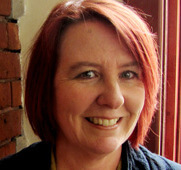by Cydney Foote
How to Improve Your Experiences for Your Med School Reapplication

One factor that can seriously hurt your chances of getting accepted to med school is a lack of substantive, ongoing service experiences, both clinical and nonclinical.
Community service is not just another hoop you need to jump through to get admitted to medical school. After asking admissions officers in 2021 to rank the relative importance of the various data they use to evaluate applicants, the Association of American Medical Colleges found that “community service and volunteer work—in both medical and nonmedical settings—were given the highest weight of any experiences.”
But which experiences will have the greatest impact on an admissions committee and show that you’ve taken your previous rejection and used it as fuel to create a more powerful application this time?

Clinical experience
Every season, I meet bright, engaged applicants who are eager to take their first step toward a career in medicine. Their only problem? Limited clinical experience. Many of them have some (or even a lot) of shadowing experience. Many have worked for a summer in a doctor’s office. Many have a semester or two of volunteering in a hospital playroom for a few hours a month. But when you add up their clinical (non-shadowing) hours, they’re just not enough.
How many hours is enough?
This is a difficult question. There’s no definite cutoff, and some applicants manage to parlay minimal hours into an impressive amount of clinical exposure. However, it’s not easy to convince an admissions committee that you want to pursue a medical career if you haven’t spent sufficient time in a clinical environment. As a general rule, applicants with 500 or more hours of strong clinical experience tend to be the most successful.
What about future hours?
Balancing full-time studies with a demanding clinical role is very difficult, which is why many people plan to work as a scribe or a medical assistant once they’ve graduated. Unfortunately, a lot of these individuals want to apply to medical school before gaining those hours. Sure, you can list 4,000 anticipated hours on your AMCAS application, but admissions officers will view those hours with a grain of salt. What if your hours are cut? What if you change jobs? What if you decide you hate medicine? Until you’ve actually performed the hours, their impact can’t be easily weighed.
If you were in this position last year and applied before performing sufficient clinical hours, you should be in a good position now for your reapplication. Just be sure that your new application focuses on how you’ve grown and how your approach to medicine has matured since your previous application.
What about shadowing?
Shadowing can give you a peek into the world of medicine, and it is a wonderful way to learn about different specialties, but to demonstrate the kind of ongoing, substantive involvement that will make an impact, you need to go further.
How to gain additional clinical experience
If you’ve identified clinical exposure as a weak area of your candidacy, there are many avenues you can take to bolster your application. These experiences won’t just help you look good on your application, they will genuinely help you prepare for a career in medicine.
- Work as a Certified Nursing Assistant or a Medical Assistant. After you’re trained, you can work in patient support roles in clinics, nursing homes, and many other settings.
- Train and work as a Medical Scribe. This is a great way to get an inside look at a doctor’s decision-making process.
- Train and work as an Emergency Medical Technician on campus or in your community.
- Volunteer at your local hospital or free clinic. Although some positions won’t offer much patient contact, others will involve providing patients with pre-exam instructions, entertaining sick children, and escorting patients to various areas. Surgical Recovery Units, Emergency Departments, and other areas often allow chances for patient interaction. And free clinics are typically in need of help. Look around your community, and see what’s available.
- Join the staff at a summer camp for children with disabilities or chronic illness. Listings on sites such as CampPage can inform you of such opportunities.
- Intern or volunteer with your county health department. Many opportunities will put you in touch with physicians and public health experts, as well as affected populations.
- See whether your local hospital offers an Elder Life Program. These often seek volunteers to work with elderly patients, as do hospices and nursing homes.
- Go abroad. Programs such as Gap Medics can help organize placements. Before seeking an overseas position, however, familiarize yourself with the AAMC’s guidelines.
Gaining substantive, ongoing clinical experience can be challenging, given that anything significant requires a medical license. And just like improving your study skills, this isn’t something you can fix quickly. Reapplying to med school before you’ve taken the necessary time to develop solid experiences is likely to land you right back at the starting gate.
Nonclinical volunteer experience
Medical schools want students who are passionate and committed – both to the world around them and to medicine. The AAMC says:
“Most volunteer experiences are valuable and will provide you with well-rounded experiences. Just make sure you have at least one solid health care-related experience, in addition to your nonmedical volunteer work, so that your experiences speak to your commitment to medicine.”
So, what volunteer experience, outside the clinical sphere, will have the most favorable impact on admissions committees?
The short answer is this: the one that will have the greatest impact on you.
The longer answer is that the ideal volunteer experience is one that ignites your passion and demonstrates your connection to the world around you. The possibilities for this are endless.
How do you find good service opportunities?
Explore your passions and help your community at the same time. Often, you’ll be able to find like-minded people or groups in your area.
- Do you enjoy building things or working with your hands? You might put your skills to work with Habitat for Humanity or help construct playgrounds for children in underserved communities.
- Do you enjoy cooking or gardening? Volunteer at a soup kitchen for people experiencing homelessness, teach cooking classes to refugee families, or donate time to a community garden.
- Do you love being outdoors? Help run a Camp Kesem day camp (for children with a parent with cancer), coach underserved kids with Up2Us Sports, walk dogs for your local humane society, or volunteer for a town cleanup day in your area.
If you can’t find an organization that does something you enjoy, create one yourself, and get your friends involved! I’ve had successful clients who started a free language program for kids, formed a support group for students with mental health concerns, and created a surfing program for children with disabilities. Connecting your interest or passion with a need in your community shows great leadership skills and initiative – both of which are highly valued by medical school admissions committees.
How long should you volunteer for?
Again, there’s no set number of hours, but the AAMC offers 100 hours as a general benchmark.
But this is about more than just putting in time. Volunteer service is valued because it enables you to grow, gain exposure to different kinds of people and diverse perspectives, and make contributions to both individuals and the wider community. Think about why you’re there and how the experience is changing your view of the world around you.
Also, keep in mind that engaging consistently in one form of volunteer work over the long term is generally more impressive than bouncing from one cause to the next (and it’s easier to stay consistent and engaged if you are truly committed to what you’re doing). The more time you spend volunteering with a group, the more responsibilities you’re likely to be given, and the more valuable your contributions will be.
When you’ve been volunteering with a group for a while, you might find that you no longer feel challenged. This might mean that it’s time to shift gears and find a different opportunity. Just make sure that it’s something you’re passionate about.
You can also address the same issues in a different way. To do this, put out some feelers to see whether there are openings or opportunities with similar organizations. And if you want to stay with the same organization but address new challenges, talk to your superiors. Chances are, there will be other tasks or responsibilities that might suit you, and you’ll be able to show your growth and leadership as you take them on.

As you prepare for your reapplication, try to stay optimistic. What you’ve been through isn’t easy – rejections aren’t good for anyone’s self-confidence – but hopefully, you can look back on the situation as a learning experience. Now that you are wiser and more qualified, you stand a much better chance of getting into medical school.
To further improve your odds of acceptance when you reapply to medical school, take advantage of Accepted’s application review service, which will provide you with a tailored assessment of your strengths and weaknesses.

A former fellowship admissions committee member and administrator at the University of Washington School of Medicine, Cydney Foote has successfully advised healthcare applicants, including those applying to medical school, dental school, nursing and PA programs, veterinary school, public health and hospital administration programs, post-baccalaureate medical programs, residencies, and fellowships. Since 2001, she has used her marketing and writing expertise to help science-focused students communicate their strengths. Want Cyd to help you get Accepted? Click here to get in touch!
Related Resources:
